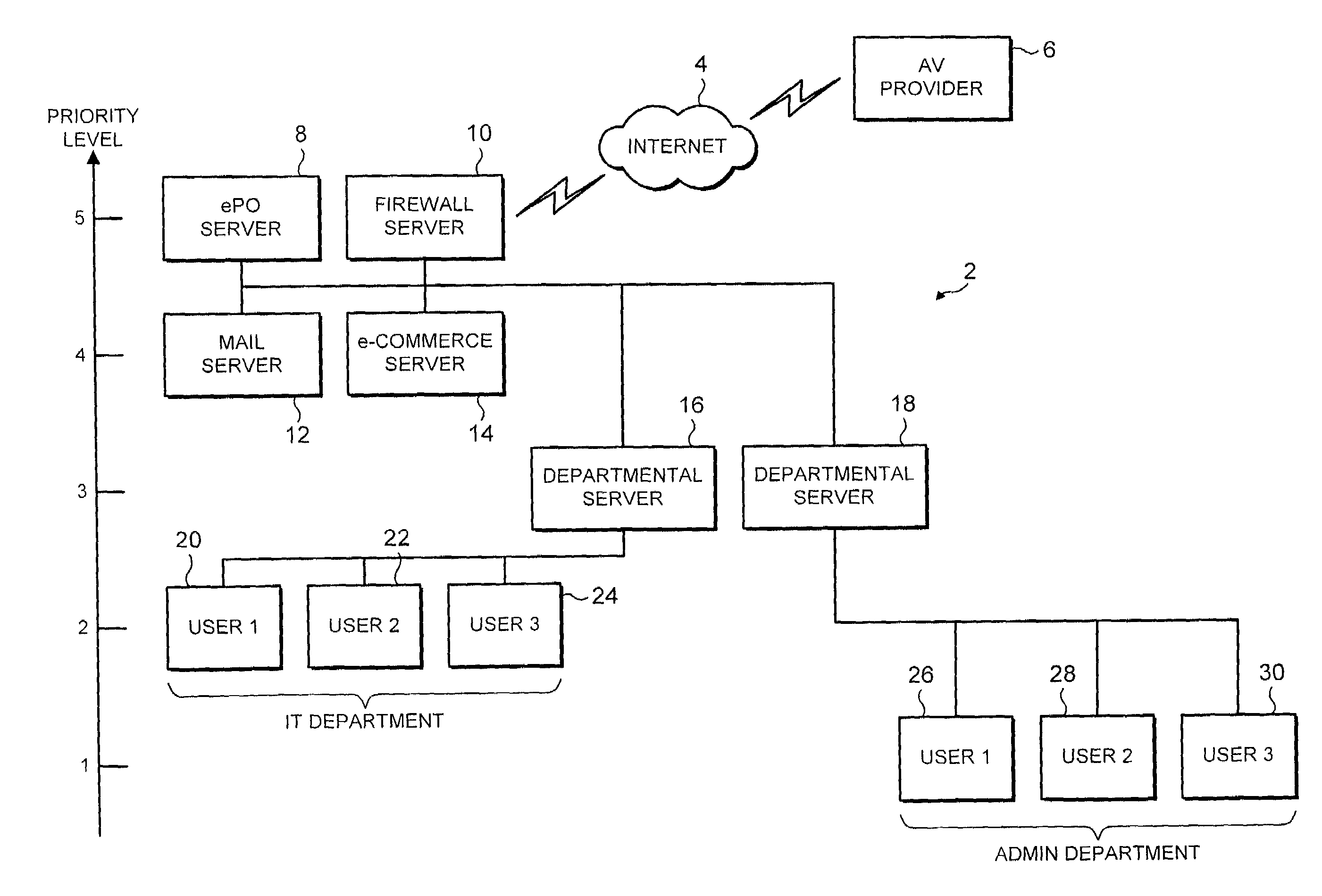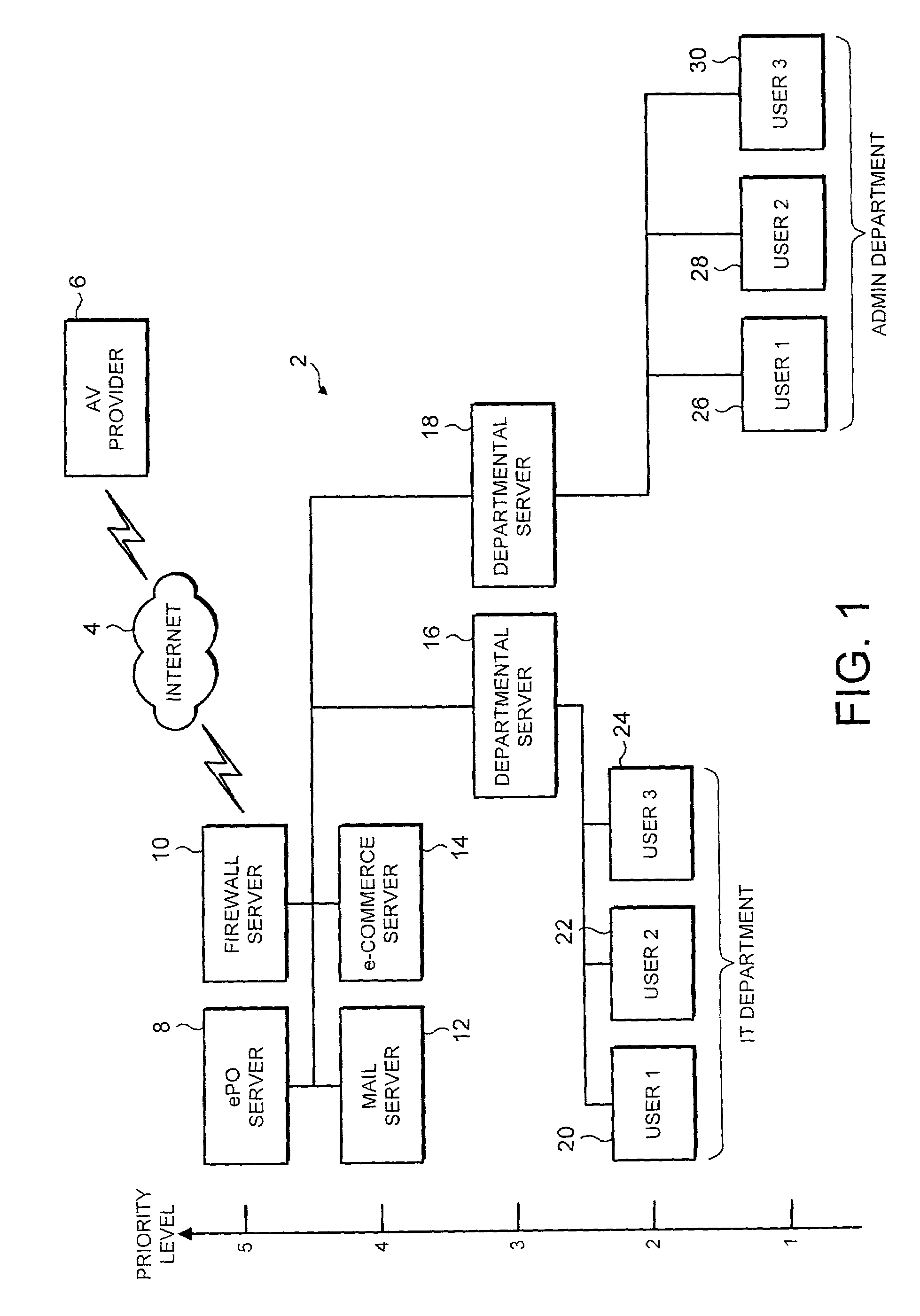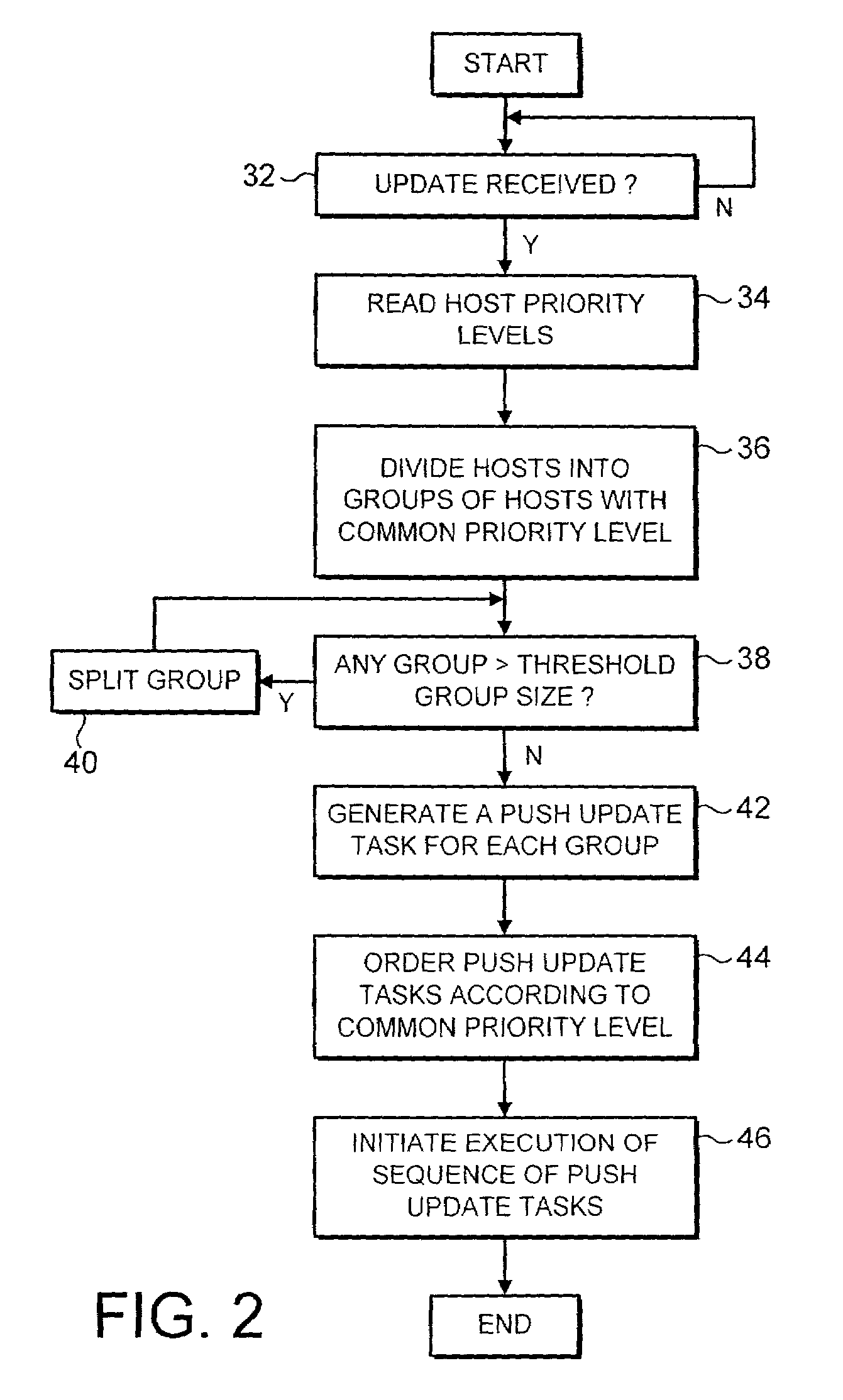Updating data from a source computer to groups of destination computers
a data source and data technology, applied in the field of data processing systems, can solve problems such as excessive slowdown or malfunction
- Summary
- Abstract
- Description
- Claims
- Application Information
AI Technical Summary
Benefits of technology
Problems solved by technology
Method used
Image
Examples
Embodiment Construction
[0031]FIG. 1 illustrates a computer network 2 connected via the internet 4 to an anti-virus provider's FTP server 6 from which updated virus scanning program engines and virus definition data may be downloaded. A security policy organising server 8 may periodically poll the anti-virus provider's FTP server 6 via a firewall computer 10 and the internet 4 to determine whether or not any updated data is available and should be downloaded by the policy organising server 8 (policy management server) and then applied to its associated network 2. When such updated data, such as malware definition data (e.g. fingerprint data for detecting computer viruses, worms, Trojans, banned files, banned words, banned images etc) or anti-virus scanner engine programs become available, then they are downloaded via the internet 4 to the policy organising server 8. Such policy organising servers 8 and their mechanisms for downloading this data from the anti-virus program provider's FTP server 6 are provid...
PUM
 Login to View More
Login to View More Abstract
Description
Claims
Application Information
 Login to View More
Login to View More - R&D
- Intellectual Property
- Life Sciences
- Materials
- Tech Scout
- Unparalleled Data Quality
- Higher Quality Content
- 60% Fewer Hallucinations
Browse by: Latest US Patents, China's latest patents, Technical Efficacy Thesaurus, Application Domain, Technology Topic, Popular Technical Reports.
© 2025 PatSnap. All rights reserved.Legal|Privacy policy|Modern Slavery Act Transparency Statement|Sitemap|About US| Contact US: help@patsnap.com



